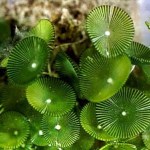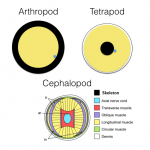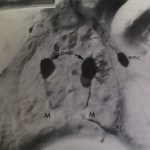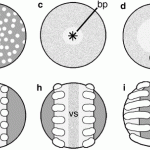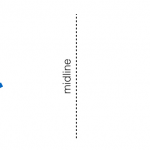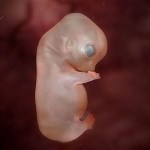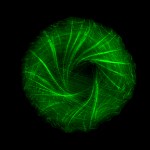development
Image of a tammar wallaby and her joey By Mathae - Own work via Wikimedia Commons
When I think of marsupials, what comes to mind is an image of a mother carrying her young (joey) in a pouch. Contrary to popular belief, however, mother tammar wallabies (Macropus eugenii) have an internal functioning placenta. Albeit, it only develops near the end of their short pregnancy (a mere 26.5 days), just before the developing offspring moves from the uterus to the pouch for further development and nursing. A new study published in eLife examined gene expression in both the placenta…
It's been a while since I brought everyone up to date on the progress of my Ecological Development course, because I've been busy. So have the students. After our spring break I subjected them to the dreaded oral exam, which actually isn't so bad. I tried to engage them less in an adversarial role and more as a quiet conversation between two people on science. Some students took to it easily -- the more outgoing ones -- others were noticeably nervous, which was OK, and I hope they learned that it isn't that terrifying to have a discussion with a mentor.
Then the next few weeks were a mad…
...in alligators at least.
Image of alligator eggs and hatchling from National Park Service.
Researchers from the University of Manchester, University of North Texas - Denton, and the Rockefeller Wildlife Refuge - Grand Chenier, Louisiana teamed up to explore the effects of exposure to low oxygen on embryonic American alligators (Alligator mississippiensis). Alligator eggs are often laid in nests where oxygen concentrations can reportedly vary between 11-20% (21% is normal atmospheric levels). This is really important as issues related to…
Image of brittle star by Jerry Kirkhart from Los Osos, Calif. [CC BY 2.0 (http://creativecommons.org/licenses/by/2.0)], via Wikimedia Commons
A new study published in Frontiers in Zoology examined the developmental process involved in regulating limb regeneration in brittle stars (Amphiura filiformis) following amputation of an arm. Limb regeneration is a multi-stage process involving initial healing and repair of the wounded site, initial growth of the limb followed by development of more complex layers of cells until ultimately the limb has been fully regenerated. …
Image of gilthead sea bream By Roberto Pillon - http://www.fishbase.us/photos/UploadedBy.php?autoctr=13070&win=uploaded, CC BY 3.0, https://commons.wikimedia.org/w/index.php?curid=20825139
A new study published in the American Journal of Physiology - Regulatory, Integrative and Comparative Physiology explored the effects of exercise on growth and hormone regulation in gilthead sea bream (Sparus aurata). The main hormones that regulate growth are, perhaps not surprisingly, growth hormone and insulin-like growth factor. Researchers discovered young gilthead seam bream that underwent…
Larry Moran has heard the words of Michael Denton, and has come away with a creationist interpretation of structuralism. I have to explain to Larry that Denton, as you might expect of a creationist, is distorting the whole idea. Here's the Denton/Intelligent Design creationism version of structuralist theory.
As Denton says, the basic idea is that the form (structure) of modern organisms is a property of the laws of physics and chemistry and not something that evolution discovered. He would argue that if you replay the tape of life you will always get species that look pretty much like the…
Once upon a time, deep in the Precambrian, this was the planet of worms. Well, actually, this was, is, and always will be the planet of bacteria, but if you filter your perspective to just organisms above a particular size, and if you're an animal writing about it in the modern day with a chauvinistic attitude that allows you to ignore that it was also a planet of algae, that would become a planet of plants, on a world that also is built of soil formed by lichens and saturated with fungus…if you ignore all that, OK, it was a planet of worms.
Late in the Precambrian, the oceans were full of…
I disagree with Razib Khan on a lot of things, but he's exactly right on recent fads in biology.
Periodically I get frankly stupid comments that seem to imply that the incredible swell of results coming out of molecuar genetics and genomics are revolutionizing our understanding of evolutionary and population genetics. Over the past generation it’s been alternative splicing, then gene regulation and evo-devo, and now epigenetics is all the rage. The results are interesting, fascinating, and warrant deeper inquiry (I happen to see graduate school admission applications for genetics, and I can…
In a review of a new book edited by Alan Love, The evolution of “evo-devo”, Adam Wilkins makes a few telling criticisms of the sub-field I enjoy.
Evo-devo has come a long way since 1981 though the Dahlem Conference laid some of the important groundwork for what followed and was, indeed, widely appreciated as having done so. Yet, troublingly, the field remains, for many evolutionary biologists, something of a side-show, a “boutique” subject within evolutionary biology as a whole. Several of us, in the 1990s, warned that this might happen. This is in contrast to some of the early expectations,…
I know this is a horrible photo -- I just snapped a picture of the journal hardcopy, which I own, instead of grabbing a PDF from the web, because it's from 1985 and I'd have to pay to get a copy of my own paper -- but this is what I was doing in grad school. I started as somebody who was interested in neurons and the nervous system, so what you're seeing is a transverse section of the spinal cord of a zebrafish, with a couple of motoneurons labeled black with a tracer enzyme. I spent most of my time teasing apart how those cells grew and made connections.
But all the while there was this one…
It's my first completely free day of Christmas break! Grades are all submitted, nothing is hanging over my head, but I still got up at 5:30am and needed to do something, so I learned about spider gastrulation.
This was a disgraceful gap in my knowledge -- I've worked on insects and on vertebrates, and am fairly familiar with gastrulation in those kinds of organisms, but one thing I did know is that there's a lot of variation in the details of gastrulation, so every new clade seems to exhibit some novel way of tucking cells in to the early embryo. Spiders do it in a cool way.
There are…
The Discovery Institute thinks axon guidance mechanisms are evidence for intelligent design. I think they just trawl the scientific literature for the words "complex" and "purpose" and get really excited about the imaginary interpretations in their head of papers they don't really understand.
There's no mention of evolution here, nor in the full paper in Science. The paper, however, does use a notable word: purpose. "These findings identify NELL2 as an axon guidance cue and establish Robo3 as a multifunctional regulator of pathfinding that simultaneously mediates NELL2 repulsion, inhibits…
Let me tell you the hard part about writing about epigenetics: most of your audience has no idea what you're talking about, but is pretty sure that they can use it, whatever it is, to justify every bit of folk wisdom/nonsensical assumption that they have. So while you're explaining how it's a very real and important biological process that is essential for development and learning and behavior, half your readers are using the biology to confirm their biases about evolution and inheritance, and the other half already know all the basic stuff and want to get to the Evisceration of the Wrong,…
Bill Nye talks about the realities of reproduction, and the right wing completely loses its shit.
It is not Nye at his most eloquent, but…he's actually right about everything important. Read this title for an example of the inanity of far right responses, titled WATCH: Bill Nye, Science Guy Makes An Idiot Of Himself On Reproduction. Nye is clearer and more correct than whoever wrote that, making it particularly amusing. It makes a lot of claims.
Not that this writer had all that great an affinity for Bill Nye anyway, but the video below has to be the most smug, snide, atheistic diatribe…
If ever I run out of creationist pseudoscience (it will never happen), I can always turn to another source, the Men's Rights movement, especially their radical anti-woman wing. Here's a prime example from RooshV: Research Suggests That A Woman’s Body Incorporates DNA From The Semen Of Her Casual Sex Partners. Would you be surprised if I told you that everything in that title is wrong? Would you be shocked to learn that everything Roosh concludes from misreading that research is also wrong?
The above study has two seismic implications. The first is that a woman can absorb enough DNA during…
Amanda Marcotte rips into stupid gotcha by Marco Rubio.
When Rubio appeared on CNN after Thursday night's Republican debate, he kept insisting that this vague entity called "science" has declared that human life begins at conception. (Actual biologists, for what it's worth, argue that life is continuous and that a fertilized egg is no more or less alive than a sperm or an unfertilized egg.) CNN host Chris Cuomo vainly tried to point out that "science" says no such thing, and Rubio got a little excited.
"Let me interrupt you. Science has—absolutely it has. Science has decided... Science has…
I have a brother with red hair. I also have a son with red hair. Once upon a time, my beard and mustache contained many red hairs among the dominant browns. If you've ever wondered how these gingers appear all over the place, Petra Haak-Bloem offers a good explanation (although it needs some editing: how many different ways can they spell pheomelanin?).
The shade of hair color is determined by the amount of melanin, or pigment, in the hair. Your DNA not only encodes what kind of pigment you have, but also how much of it. “For white people the shades are dependent on two sorts of melanin:…
I've only just noticed that I have a fondness for food metaphors when talking about development -- gastrulation is a peculiar way to make a jelly sandwich, neurulation is like rolling up a burrito, and somite formation is a meatball sub. They sort of illustrate the arrangement of the tissues involved, but of course they all have shortcomings…but then explaining how the metaphor doesn't work can be just as informative as the metaphor itself.
For instance, early in its development, the vertebrate embryo consists of two epithelial sheets, the epiblast and hypoblast, pressed against each other…
Here is today's scientific image:
This delicate, fluffy object is a cytoskeleton viewed under a fluorescence confocal microscope. Below is a time-lape video of the process. For an explanation of why the cell's actin fibers twist around into this shape, go to our website.
[embed]https://www.youtube.com/watch?v=iLm0Ojngjc4[/embed]
Indeed, all three of today's new articles involve crucial cellular dynamics: cutting up unfolded proteins with pared-down molecular "scissors" and binding to metal ions in proteins. In other words, within that lovely shell-like cytoskeleton, the cell is quite a busy…
In my previous post about Paul Nelson's weirdly ignorant view of nematode evolution, Kevin Anthoney made a prescient comment:
Remember that Nelson’s got this bizarre linear view of evolution which starts with a single cell creature, which evolves into a creature with a few cells, which evolves into one with a few more cells, and so on until you reach the 1031 cells in the nematode today. It wouldn’t surprise me at all if Nelson thought that the creature at the 150 cell stage in this process had to be like a modern nematode at the 150 cell stage of development.
The Discovery Institute has…

